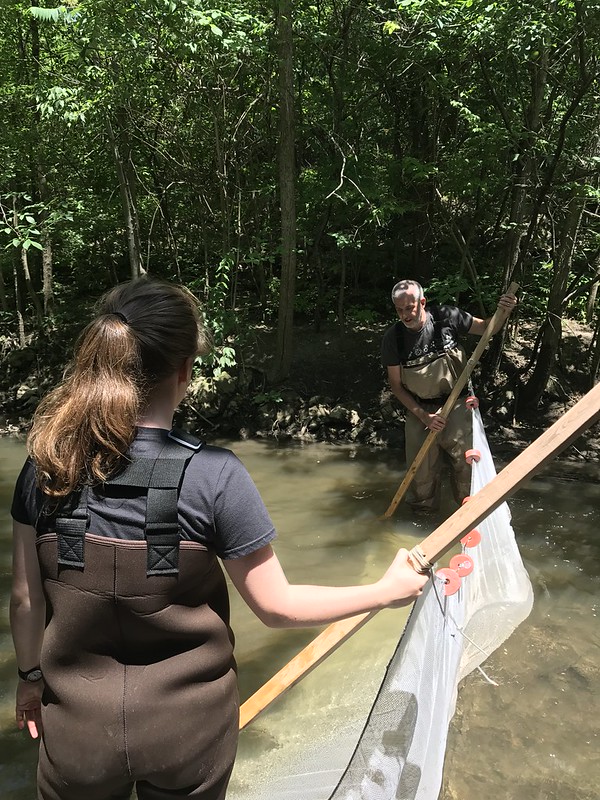Ecology student studies invasive mussel species to inform management agencies of at-risk water bodies

Hunt (right) and a labmate sample for fish in the Rouge River.
They're researching the impact of invasive zebra mussels
on minnow distribution.
A self-proclaimed "born and bred Detroit original," Darrin Hunt grew up surrounded by the Great Lakes and, like many local ecologists, is determined to help preserve them and other freshwater bodies. Pursuing a dual-title Ph.D. in biological sciences and urban sustainability, Hunt studies the impact of invasive mussels on native organisms in small stream ecosystems.
His research includes the role anthropogenic stressors, such as urbanization and climate change, play on these freshwater organisms and invasive species.
"I was inspired to do this work because I believe that the impacts of anthropogenic stressors on water quality will become more important as human populations increase."
He's traveled far and wide across metro Detroit to conduct fieldwork on the city's vast network of streams, many sites located throughout the Rouge, Huron and Clinton rivers. His favorite site? "A beautiful little river reach in the Huron River's northern tributaries in Ray, Michigan. This first-order stream has excellent water quality, but has black, silty substrates due to the high levels of dissolved organic carbon."
Hunt has tracked invasive mussel populations from Puerto Rico to one of their most northern invaded sites in Michigan. But his most formative and "somewhat scary" experience was a stint spent traveling across the southeastern U.S., when he and his fellow researchers had to side-step snapping turtles and alligators in remote areas to study invasive Asian clam populations, he said. "It was wild."
Hunt hopes his research will be used to inform management agencies where invasive mussels are located and what water bodies could be most at risk for new invasions so that these vulnerable areas might be better protected.
In addition to his dissertation research, Hunt was awarded a National Science Foundation fellowship through the T-RUST program and paired with graduate students in other disciplines to devise a model to utilize available resources to manage invasive wetland plants in public parks. He has also taken part in the "SMART management of microplastic pollution in the Great Lakes" project in the civil and environmental engineering program and the "Where the people meet the muck: an integrated assessment of beach muck and public perception at the Bay City State Recreation Area, Saginaw Bay, Lake Huron" project in the biological sciences program.